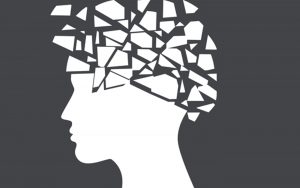In fact, there’s no single cause for anxiety and depression. Find out more in Molly’s post, as part of the EDIT Blog Mythbusters series.
“But we already know that anxiety and depression are caused by _______.”
When I talk to people about our team’s research and our goal of finding causes (aka risk factors) for anxiety and depression, I commonly hear this response – particularly on social media, but also when speaking with family or friends who work outside of the mental health sphere. You can fill in the blank with your preferred risk factor. Trauma is one of the most common (hence the title of this blog), but I’ve also heard “society”, “poverty”, “Brexit”, “family”, etc.
As a researcher, I would love it if there were a single thing that would explain why people have depression or anxiety. Having a single cause would enable us to focus our treatments, and so it’s understandable why we are seeking simple causal explanations.
Unfortunately, it’s not that easy. Mental health is complex, and mental health disorders have a wide range of causes which combine and interact in different ways that can change from one person to the next. In some ways it’s like trying to solve a puzzle, where the puzzle is different for each person. For example, trauma is a known risk factor for depression. Yet some people are depressed and have never experienced a trauma. Others have had something traumatic happen to them in the past, but haven’t developed depression…

“Typically, research studies will take one group of people with depression and another group without depression and compare them to try and find differences between the two groups.”
When researchers speak about risk factors as a general concept (e.g. trauma is a risk factor for depression), they are not making a statement about individuals. Rather, they are talking about comparing groups of people. Typically, research studies will take one group of people with depression and another group without depression and compare them to try and find differences between the two groups. Results from these types of studies will then report that the group with depression have experienced more trauma than the group without depression overall. This research is useful and necessary to better understand these disorders. These discoveries help guide us by indicating important areas to focus on to prevent (e.g. additional support for individuals who have experienced trauma) or treat depression (e.g. address trauma and teach coping strategies in therapy). However, this doesn’t necessarily tell us why an individual person within that group has depression. That’s where we want to get to next.

“To help us reach that goal of individualised risk assessment, mental health researchers have turned to “big data” to help understand these disorders better.”
To help us reach that goal of individualised risk assessment, mental health researchers have turned to “big data” to help understand these disorders better. Studies such as the Genetic Links to Anxiety and Depression (GLAD) Study, UK Biobank, and Generation Scotland (among others) recruit thousands of participants and collect large amounts of data to investigate the social, environmental, developmental, and genetic risk factors for mental health disorders.
The aim is to eventually be able to identify how all of these different factors tie together, and what combinations may increase an individual’s (not just a group’s) risk for depression, anxiety, or any other complex disorder. By getting a more complete picture, we will be better able to prevent, identify, and treat disorders for each person.


